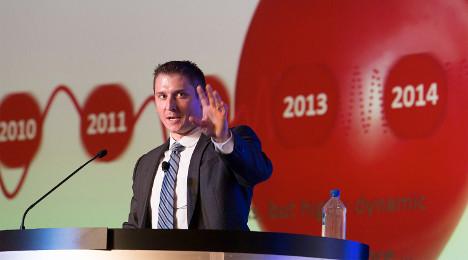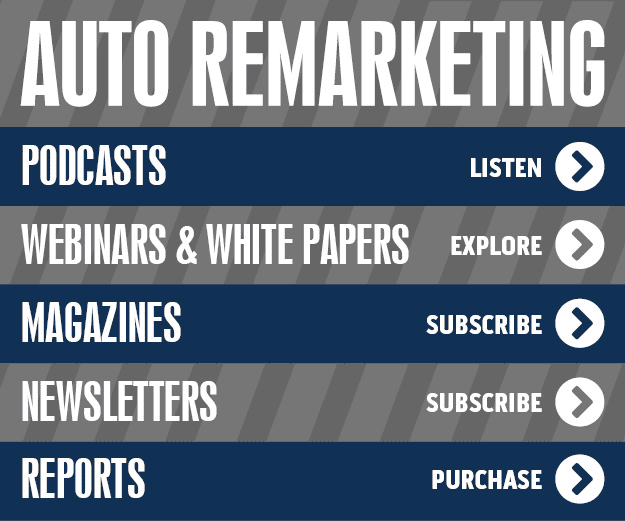Westlake Financial Services shared its plans this week to expand its servicing team at the WFS Production Center in Dallas. Since its inception back in January, the company highlighted this facility has increased support for Westlake’s dealer partners, providing them with improved servicing.
To keep the momentum going, Westlake intends to hire 85 employees by the middle of next year. Executive explained the recruitment and training of new hires is scheduled to begin at the end of September. Once training is complete, employees will begin servicing accounts by mid-October.
“The Dallas location will employ experienced service personnel who will work in conjunction with the servicing team at our U.S. headquarters in southern California,” Westlake senior vice president of servicing Amit Shah said.
“Through our ongoing effort to provide the highest quality of service to our customers, we are expanding our team in Dallas to support sustainable growth and potentially double the size of our portfolio,” Shah continued.
Westlake Financial Services senior servicing manager Dewayne Couch touched on why this Texas market should provide the company with a bolstered workforce.
“We are excited to grow into the Dallas area,” Couch said. “The Dallas/Fort Worth metro area has a large network of talent that will offer superior customer service for our valued customers.”
The company went on to mention members of Westlake’s servicing team possess unique customer service skills and assist in providing service to customers and dealer partners. These team members are integral to Westlake’s success, as they are responsible for managing accounts and executing collections efforts.
“Our continued success is due to our employees,” said Ian Anderson, group president of Westlake Financial Holdings and last year’s winner of the SubPrime Auto Finance Executive of the Year Award.
“The strong performers we’re going to hire in Dallas will support an important component of our next phase of growth, which is building the Westlake presence in the central U.S.” Anderson continued.
Anderson also highlighted the contribution he expects the Dallas office to make to Westlake’s burgeoning third-party servicing business.
“We’ve achieved success as a third-party servicer with the $178 million Condor portfolio, and we’re confident that we can apply that model to successfully service other finance companies’ portfolios,” said Anderson, who will be back at this year’s SubPrime Forum at Used Car Week on Nov. 16-18 in Scottsdale, Ariz., to congratulate this year’s award winner and participate in the wide array of discussion set for the conference orchestrated in conjunction with the National Automotive Finance Association.
Also this month, Westlake said will begin the hiring process for experienced collectors.
Candidates with “purpose and passion for the automotive finance industry” are encouraged to apply through www.WestlakeFinancial.com.
AmTrust Financial Services recently completed of the acquisition of Warranty Solutions from Wells Fargo & Co. for approximately $158 million in cash.
Officials indicated the transaction is expected to be immediately accretive, meaning it will add more value than the cost of the acquisition.
The company recapped that Warranty Solutions designs, markets, administers and underwrites vehicle service contracts for new and used vehicles through a national network of more than 70 active agencies, and 1,500 franchised and independent dealers.
“We are excited to welcome the employees, agents and customers of Warranty Solutions to the AmTrust family of companies,” AmTrust Financial Services president and chief executive officer Barry Zyskind said.
“The addition of Warranty Solutions' strong reputation and extensive market presence should profitably add to our already successful vehicle extended warranty business,” Zyskind added.
Warranty Solutions is comprised of the following corporate entities:
— Warranty Solutions Management Corp.
— Heritage Indemnity Co.
— Westlake Insurance Co. (Bermuda)
— Warranty Solutions Administrative Services
— WS Aftermarket Services Corp.
— Heritage Mechanical Breakdown Corp.
GrooveCar, a vehicle-buying resource for the credit union industry, recently formed a strategic partnership with DataOne Software to integrate real-time vehicle information within GrooveCar’s all new Everything Automotive Auto Buying Resource.
Because of the partnership, GrooveCar is looking to launch its all new Everything Automotive Auto Buying Resource this winter.
The intended goal is to provide credit union members with the ability to make informed decisions on their next auto purchase, using a powerful auto shopping and research platform provided to them by their credit union. A portion of the diverse and extensive wealth of information powering this platform will be delivered by DataOne Software.
The direct connection between GrooveCar’s proprietary SUPRtec platform and DataOne’s PerfectFit software is designed empower the user to find the right vehicle at the right price. SUPRtec utilizes next generation technology to provide a rich user experience when searching for new or pre-owned vehicles.
This smart technology is the power behind several key features new to the site including the “Right Fit” vehicle preference search tool; a calculator tool which retains user preferences and applies accurate payment and purchase costs to each vehicle searched in real-time; and a garage function that houses all searches and information for future searches and decision making.
“When we made the decision to completely overhaul our existing platform, we knew we had to collaborate with forward thinking enterprises that understood each vertical our program currently provides, as well as those we would like to deliver. After going through a formal selection process, it was an easy decision to partner with DataOne Software,” GrooveCar vice president of strategic alliances Robert O’Hara said
“Our new platform will exceed the expectations of our extremely diverse and demanding partners and their auto shopping consumers,” O’Hara continued.
With the launch of its new website, GrooveCar is poised to help credit unions take advantage of this thriving auto buying market. Users can research millions of vehicles from national inventory, build and compare vehicles, read all the newest reviews and articles while staying informed of current rebates and incentives.
“Early in our discussions with GrooveCar, both parties realized what a great match there was between their product vision and the capabilities of our PerfectFit Vehicle Shopper API,” DataOne Software general manager Jake Maki said.
“GrooveCar wanted to develop a powerful shopping and research tool that was customized to each consumer’s values and needs,” Maki went on to say. “Using our PerfectFit suite of products, they have been able to accomplish this, creating the unique and intuitive shopping experience they envisioned.”
More information can be found online at www.groovecarinc.com.
EFG Companies this week announced student competitors and F&I mentors participating in the first F&I Innovator of the Year Award competition at Northwood University.
The competition will pit six teams of Northwood’s junior and senior undergraduate automotive marketing and management students against one another to conceptualize and build a new F&I product while earning course credit.
Each team includes an F&I director who will serve as a mentor and provide beneficial insight into the daily inner workings of automotive F&I.
“Because of their practical experience within dealerships, the mentors’ knowledge will be invaluable to the teams,” said John Pappanastos, president and CEO of EFG Companies. “The directors will help the teams understand compliance and its increasing impact on F&I, the changing profile of consumers, and the focus on client retention.“
The teams and mentors include:
Team AutoMates
Comprised of Drake Green (Peoria, Ill.), Gordon Jenks (Venice, Fla.) and Victoria Pretty (Midland, Mich.), Team AutoMates believes they have the most dealership experience combined with a zeal for the automotive industry. One team member comes from a family of dealership owners, and all members have worked in an F&I office.
Team AutoMates is mentored by Tim Ososanya, finance manager at Bob Moore Auto Group in Oklahoma City.
Team Car Conglomerate
Sarah Trierweiler (Portland, Mich.), Austin Kelly (Osseo, Mich.) and Kayleen O’Boyle (Midland, Mich.) make up Team Car Conglomerate. This group of focused students combines a love of accounting with a passion for the automotive industry. Plus, their team mascot Franklin (a Labrador puppy) has prompted them to target pet owners for their F&I product submission.
Team Car Conglomerate is mentored by Dena Moore, finance director at Davis-Moore Auto Group in Wichita, Kan.
Team Furthering Innovation
This enthusiastic group brings a love of cars coupled with a legacy of attending Northwood University to Team Furthering Innovation. Jaclyn Suchta (Rochester, Mich.), Matt Brown (Midland, Mich.) and Tyler Scott (Midland, Mich.) all have experience in the F&I office, and believe their product will appeal to both young and older car buyers.
Team Furthering Innovation is mentored by Adrian Peterson, finance manager at Moritz Dealerships in Ft. Worth, Texas.
Team Quantum Integration
With a competitive, creative focus, Team Quantum Integration strives to be the winning group in the Innovation contest. Team members Collin Ulvund (Boyne, Mich.), Jon Vollmuth (Lake Barrington, Ill.) and Richie Durso (Annville, Pa.) look forward to applying technology to their F&I product submission.
Team Quantum Integration is mentored by Caleb Hargreaves, finance manager at Hanlees Auto Group in Davis, Calif.
Team 4
Team 4 members Audrey Moses-Hoh (Howell, Mich.), Harry Collins (Franklinville, N.J.) and Mark Ruhle (Royal Oak, Mich.) are eager to leverage Northwood’s historic automotive programs with their own millennial focus to deliver the winning F&I product entry.
Team 4 is mentored by Jeff Zinsser, finance director at Star Cars of Abilene in Abilene, Texas.
Team 6
Members of Team 6 are “all automotive, all the time.” Geoff Wallace (Traverse City, Mich.), Matthew Stickney (Brightwaters, N.Y.) and Ryan Holton (Milford, Mich.) believe that innovation, determination and hard work will help them win the F&I award.
Team 6 is mentored by Craig Drew, general manager at Central Maine Motors AutoGroup in Waterville, Maine.
“The students selected to participate in this inaugural F&I Innovator of the Year competition represent the best and brightest at Northwood University,” said Elgie Bright, chair of the automotive marketing and management program at Northwood University.
“Each student maintains a 3.0 GPA along with internships and several other extracurricular activities,” Bright continued. We are excited to see what these students bring to the table.”
You can see weekly team diaries on the competition’s YouTube channel here.
GWC Warranty bolstered its offerings of vehicle service contracts and related finance and insurance products by recently introducing a new 5-year, 100,000-mile used model coverage term length and a Service Lane product.
Based on input from dealers across the country, GWC Warranty highlighted the new 5-year, 100,000-mile coverage term is available on select used vehicle protection plans can provide the same coverage that has helped protect more than 1.5 million drivers since 1995 at a new, longer term length.
Service Lane is a new addition to the GWC product suite. Specially designed for dealers with on-site service facilities, the new Service Lane product can allows dealer to sell GWC service contracts directly from their service facility.
“At GWC Warranty, we pride ourselves on providing the products, service, technology and training to help dealers sell more cars,” GWC chief executive officer and president Rob Glander said.
“We know the needs of automotive dealers nationwide are constantly evolving, and these new additions demonstrate our commitment to providing a product set that meets the ever-changing needs of our dealer partners and their customers,” Glander continued.
In the past 15 months, GWC Warranty has completely revamped its product offering to better meet the ever-changing demands of dealers.
In July of last year, the company announced changes to its core products. The improved products were built to better serve a greater variety of drivers’ budgets and coverage needs.
At the same time, GWC also introduced its own certified pre-owned program to help dealers sell more vehicles by taking advantage of an industry trend proven to sell units for $700 more per unit and move inventory 12 days faster.
To learn more about the complete GWC product suite, visit www.gwcwarranty.com/products.
Perhaps what Equifax chief economist Amy Crews Cutts shared about the thinking of most observers means the Federal Reserve will deliver finance companies the gift of an interest rate adjustment a little more than a week before Christmas.
With the Federal Open Market Committee choosing not to make a short-term interest rate change this week — keeping it at or below 0.25 percent — there are only two more chances for the group to increase the level. The committee gathers Oct. 28-29 and again on Dec. 15-16.
In a message to SubPrime Auto Finance News, Crews Cutts indicated most economists now believe a rate increase will occur in December
“The Fed delayed increasing short-term rates at this week’s meeting of the Federal Open Market Committee, but strongly indicated that they would likely do so before the end of the year. Importantly the members of the FOMC have greatly lowered their forecast for interest rates over the next several years,” she said.
“Short-term rates have little impact on the costs for most consumer loans, with the exception of loans based on the prime rate of interest, which adds 3 percentage points to the federal funds target rate, the rate set by the Fed,” Crews Cutts continued.
While the activities of the Fed certainly impact behavior on Wall Street, Crews Cutts also shared what she believes matters more to potential vehicle buyers and auto loan borrowers than what the Fed does with short-term interest rates. She pointed to what happens to longer-term interest rates, “which depend on inflation expectations and global investors, not the Fed.”
Crews Cutts explained that “When global investors get spooked, for example when the Chinese stock market plunged in recent weeks, they seek the safety of U.S. Treasury bonds, which temporarily dropped our interest rates — great news for borrowers.”
Cox Automotive chief economist Tom Webb shared a similar assessment of the week’s events with SubPrime Auto Finance News, reiterating a portion of what he discussed nearly month ago in Manheim’s Auto Industry Brief.
“It wasn’t a surprise since I think everyone thought it was a coin toss going in,” Webb said. “Some people were taken aback by the commentary that surrounded it, attributing it to global economic conditions as opposed to our domestic conditions. But again, that’s certainly not surprising since we expected that if they didn’t raise it, that would be the main reason."
Webb still sees a major question being whether the Fed makes a move before Halloween or prior to closing stages of the holiday shopping season.
“The biggest things we have to concern ourselves with are the macroeconomic implications,” Webb said. “It’s not industry specific in terms of retail financing etc. But even if there is an acknowledgement that at some point once you raise rates, you can still have market turmoil. That seems rather confusing but that does in fact happen.
“(Thursday’s) move certainly didn’t cause that. It would have been curious as to what would have been the reaction had they raised it. Would the market been materially different? I don’t know,” he went on to say.
Committee members acknowledged that information they received since their last meeting in July suggests that economic activity is expanding at a moderate pace. They added that on balance, labor market indicators show that underutilization of labor resources has diminished since early this year.
The Fed group reiterated that consistent with its statutory mandate, the committee seeks to foster maximum employment and price stability. So all but one of the 10 members voted not to make an interest rate change. The only one supporting an increase this week was Jeffrey Lacker, president of the Federal Reserve Bank of Richmond
“Let me again emphasize that the specific timing of the initial increase in the target range for the federal funds rate is far less important for the economy than the entire expected path of interest rates,” Federal Reserve chairman Janet Yellen said. “And once we begin to remove policy accommodation, we continue to expect that economic conditions will evolve in a manner that will warrant only gradual increases in the target federal funds rate.
“Most participants continue to expect that economic conditions will make it appropriate to raise the target range for the federal funds rate later this year, although four participants now expect that such conditions will not be seen until next year or later,” Yellen continued.
Yellen capped off her prepared remarks following the committee’s decision by making one last point.
“I would like to underscore that the forecasts of the appropriate path of the federal funds rate, as usual, are conditional on participants’ individual projections of the most likely outcomes for economic growth, employment, inflation and other factors,” she said.
“But our actual policy actions over time will depend on how economic conditions evolve, which is quite uncertain,” Yellen added.
In a move to highlight the important work being completed by F&I offices at franchised dealerships, the National Automobile Dealers Association rolled out an online campaign this week to tell stories of consumers who saved money by financing new-vehicle purchases through local dealerships.
Through video testimonials and a new website to showcase the “true” economic value of dealer-assisted financing, NADA is bringing the voices of consumers back into the debate over dealer-assisted financing. Dealers have been fighting to preserve the fiercely competitive, pro-consumer financing model ever since it came under threat from the Consumer Financial Protection Bureau in 2013.
“Consumers save money every day when they finance through dealerships, but that truth is getting lost in Washington, and that needs to change,” NADA president Peter Welch said.
“The stories that we're highlighting are far from unique,” Welch continued. “Dealers across the country save consumers money every day, and right now Washington is failing to understand what’s at stake for these consumers and millions more if competition is stifled and dealers are prevented from offering discounts on financing.”
In today's vehicle finance market, NADA reiterated that local dealerships are able to shop a customer's credit application to dozens of finance companies all competing for the same loan. As a result, the association insisted dealers usually offer better interest rates than consumers can find on their own.
Furthermore, NADA stressed that dealers have the ability to discount their rates to meet or beat a competing credit offer, which results in further savings for consumers.
Yet despite the fact that every day thousands of consumers save money on new vehicle purchases when they choose financing through their local dealerships, association officials warned that the CFPB is pressuring finance companies to eliminate the dealer discounts that are a primary driver of these consumer savings.
Meanwhile an online report also surfaced that indicated the method the CFPB used to find discrimination orchestrated by finance companies that work with these dealers might be overestimated.
In this report, American Banker said it reviewed a series of private documents that indicated CFPB officials repeatedly acknowledge its methodology — disparate impact — could overcount the potential discrimination by indirect auto finance companies, but say they prefer that to the alternative where bias is underestimated.
Some of the resulting actions from the CFPB finding alleged discrimination forced finance companies to modify how it compensates dealers for originating the paper, which NADA contends can eventually impact how much consumers pay for vehicles.
"Most consumers know that financing is available at their local dealership, but what many don’t know is that dealer-assisted financing usually saves them money,” Welch said.
“Many policymakers might not realize this either, but once the savings that comes from dealer discounting is made clear, it will be hard for Washington to turn a blind eye,” he went on to say
NADA added that the CFPB’s efforts to eliminate or restrict dealer discounting have not included an analysis of the economic impact to consumers, and continue to be met with increasing scrutiny by Congress.
Earlier this year, Reps. Frank Guinta, a New Hampshire Republican and Ed Perlmutter, a Colorado Democrat, introduced legislation — H.R. 1737 — that would promote transparency at the CFPB in order to help ensure that its policies do not unintentionally hurt consumers. In July, the legislation, which has 55 Democratic and 71 Republican cosponsors, passed the House Financial Services Committee on a 47-10 vote. The bipartisan vote included the support of 13 of the committee's 26 Democrats, and House Republicans have indicated that the bill may come to the floor for a vote within the coming weeks.
“Our message is getting out, the facts are on our side, and people are starting to take notice, Welch said. “But there’s too much at stake for consumers, so we don't intend to take our foot off the gas until we know that consumer rights and consumer savings are adequately protected.”
The campaign can be found online at nada.org/autofinance, and one of the videos associated with the campaign can be watched in the window at the top of this page.
Perhaps underwriting standards aren’t quite as relaxed now as they might have a been a few quarters ago, but Fitch Ratings still is expecting to see “new entrants” into subprime auto financing during the near term.
Along with touching on subprime, Fitch’s latest auto loan asset quality report highlighted a pair of other auto financing trends, including strong U.S. auto loan performance and fewer commercial banks easing underwriting terms.
While underwriting terms remain eased relative to historical standards, Fitch recapped that recent Federal Reserve senior loan officer survey data showed that just 3.3 percent of net respondents eased underwriting standards in the second quarter of 2015. This level is down from 14 percent of net respondents who eased standards in the July 2013 survey.
“Although Fitch views this positively, as long as terms continue to be relatively relaxed, newer loan vintages will continue to underperform earlier ones, eventually leading asset quality to revert to historical averages over the medium term,” analysts said.
Fitch contends that an improving employment picture, steadier economic conditions and falling gas prices are contributing to “robust” vehicle sales. The report mentioned that these same factors could push new-vehicle sales in the U.S. to break 17 million units for the first calendar year since 2001.
“Fitch believes that high levels of competition between major auto lenders will still result in further easing of terms, lower FICOs and new entrants into subprime lending over the near term, despite the decreased pace of easing,” analysts said.
As will be part of the conversations during the SubPrime Forum coming up at Used Car Week in November, the Fitch report went on to note that auto loans are expected to remain one of the faster growing asset classes for U.S. banks and other financial institutions.
Analysts also pointed out the July Fed loan survey showed that over second quarter of this year, loan officers seeing an increase in auto loan demand exceeded those seeing decreases by a margin of 18 percent.
“Macroeconomic factors that correlate with auto loan performance, such as unemployment, also point to the market remaining robust,” analysts said.
“That said, competitive underwriting conditions, combined with potential future pressure on auto residual values and consumers' ability to continue to service their personal debt obligations in a rising rate environment, could push the market toward weaker asset quality over the medium term,” they continued.
Currently however, despite competition, Fitch highlighted that U.S. auto finance companies are still enjoying generally strong asset quality through the first half of the year.
Year-over-year performance for the top nine Fitch-rated auto finance companies was “mixed.” Analysts indicated that performance reflected the continued easing of underwriting standards, higher subprime finance and a decline in used-vehicle values in recent periods.
However, Fitch noted prime loans saw improvements that were attributable to better consumer discretionary spending, “a seasonal effect typical in the first half of the calendar year following year-end consumer spending surges,” according to analysts.
Fitch's prime auto ABS index performance remained “solid,” while Fitch's subprime auto ABS index experienced a 47-percent increase in annualized net losses to 5.44 percent in second-quarter 2015. Nonetheless, the subprime auto loan index still remains well below peak recessionary levels in late 2008 to early 2009.
The top nine Fitch-rated auto lenders, including captives, held about $473 billion of auto loans at the end of June. Of the nine, Fitch pointed out only General Motors Financial and Capital One Auto Finance have any meaningful subprime exposure in their loan portfolios.
A discussion about companies such as GM Financial and Capital One is on tap for the SubPrime Forum panel session titled, “Soaring in Subprime.”
Barrett Teague, vice president of lender solutions at Black Book, will moderate a candid conversation featuring top subprime auto finance lending executives aimed at gathering perspective and C-level opinion on the key foundations of the subprime market and what their companies see as opportunities and challenges.
That panel and more is on tap for the SubPrime Forum, which is part of Used Car Week that runs from Nov. 16-20 at the Phoenician in Scottsdale, Ariz. Agenda details, links to registration and accommodations along with a downloadable list of executives who have already made the decision to attend can be found at www.usedcarweek.biz.
Even one of the experts who specializes in the certified pre-owned vehicle market and is set to appear at Used Car Week for the fifth year in a row joined the discussion about what moves the Federal Reserve might make associated with interest rates.
Joe Derkos, director of the Power Information Network, a division of J.D. Power and Associates, touched on interest rates during a Used Car Week sneak peek webinar hosted by Paul Potratz, chief operating officer of Potratz Advertising.
“Who knows really in the short run if and when that rate increase will occur. How big it will be is the real critical question,” Derkos said. “Directionally, I think the industry is bracing for that increase to come sooner rather than later.”
By the time Derkos appears at Used Car Week, perhaps the Fed will have made a decision since the meeting of the Federal Open Market Committee begins on Wednesday. Cox Automotive chief economist Tom Webb also weighed in about the topic in this report from SubPrime Auto Finance News in which Stifel Nicolaus & Co. chief economist Lindsey Piegza called gathering “arguably the most widely anticipated event in the aftermath of the Great Recession.”
Meanwhile, Derkos again has a prime spot at Used Car Week, which includes the SubPrime Forum, the CPO Forum, the Re3 Conference and the National Remarketing Conference. Derkos, who is delivering the opening day keynote at Used Car Week on Nov. 16, will go into everything from an overall industry overview and the parallels between the new- and used-car markets to the top factors driving the pre-owned market, like extended-term financing, lease maturities and the impact of younger buyers and more subprime buyers.
During the recent webinar, interest rates weren’t the only finance oriented topic Derkos and Potratz broached. In light of Equifax reporting earlier this summer that total outstanding balances on vehicle installment contracts and leases surpassed $1 trillion, Potratz asked, “Is it that they’re buying more expensive vehicles or is it that all vehicles have increased in price?"
Derkos replied, “It’s really both. If you break it down year-over-year, it’s almost an even split between those two drivers. We do see a shift to larger, more expensive segments like pickup trucks. There’s been a lot of action there as well as SUVs.
“Additionally, everyone from the low end to the high end in terms of price are seeing their prices go up. In terms of technology, CAFE requirements, those costs are being passed on to the consumer in terms of higher prices,” Derkos continued.
“It sets the tone for the overall industry,” he went on to say during the webinar, which can be watched in its entirety through the window at the top of this page.
Potratz will be talking even more about auto finance when he hosts his next Used Car Week sneak peek webinar coming up at 3 p.m. ET on Oct. 1. That’s when one of the keynote speakers for the SubPrime Forum will be the special guest, Melinda Zabritski, senior director at Experian Automotive. Finance companies executives and dealers can catch the online conversation by registering for the session here.
Zabritski has been one of the experts annually at the SubPrime Forum, which is orchestrated in partnership with the National Automotive Finance Association.
Used Car Week runs from Nov. 16-20 at the Phoenician in Scottsdale, Ariz. To view conference agendas, make reservations for accommodations and more, go to www.usedcarweek.biz.
Perhaps auto finance companies will know more about interest rates this week since Stifel Nicolaus & Co. chief economist Lindsey Piegza called the upcoming meeting of the Federal Open Market Committee “arguably the most widely anticipated event in the aftermath of the Great Recession.”
Piegza recapped recent remarks by Federal Reserve president William Dudley, who acknowledged the case for a rate increase this week “seems less compelling” than it did several weeks ago. Piegza also noted other Fed officials have said any decision is dependent on the “evolution” of the incoming data leading up to the meeting.
“The only remaining question is,” she said, “what is the data telling us?”
Because on that question, Piegza noted in her recent economic commentaries that most committee members have not yet made up their mind. Instead they will be relying on the latest round of data to determine whether or not it’s time for an interest rate uptick. However, the closer the industry moved to this week’s juncture, the less likely a rate modification was projected to happen, according to Piegza.
“While some Fed members remain clear outliers — Atlanta Fed president Dennis Lockhart would have voted to raise rates some time ago and Chicago Federal Reserve president Charles Evans continues to suggest late 2016 — most policymakers remain on the fence,” Piegza said.
“Such members are not oblivious to the extended timetable of low rates for the past six years, nor are they unaffected by the ticking clock,” she continued.
And what about Fed chairman Janet Yellen? To offer some analysis, Piegza mentioned Yellen’s remarks during speech to the City Club of Cleveland and then later in her semiannual monetary policy testimony. Each time, Piegza pointed out that Yellen quantified her expected timetable for an interest rate lift to be this year.
“She said that 2015 may still be the appropriate timeline for a rate increase if the economy evolves as we expect,” Piegza said. “Despite the importance Yellen has placed on incoming data, market participants have focused more on the calendar and the rapidly shrinking window of opportunity the Fed still has to initiate the first rate increase this year.
“In other words,” Piegza went on to say, “has the Fed seemingly backed themselves into a corner for a rate increase sometime this year irrespective of economic activity?”
Meanwhile, in his Auto Industry Brief for August, Cox Automotive chief economist Tom Webb looked outside the U.S. for what elements might impact what the Fed does this week.
“The biggest factor weighing on the decision is, of course, China, where a currency devaluation and an all-out effort to thwart a stock market slide are rightly viewed as desperation moves to stimulate growth. Growth that is clearly less than commonly reported,” Webb said.
“The ripple effects on Asian economies could be enormous,” he continued. “In Japan, it would hit an already weak economy. Japan’s GDP contracted in the second quarter. In South Korea, it creates a dilemma: Push down the Won and risk capital flight, or stand by and watch exports slow.
“Europe’s future is also dim,” Webb went on to say. “Growth in the Eurozone has been basically flat despite the benefit of a weaker Euro, lower oil prices and unprecedented quantitative easing. In fact, since the recession, the Eurozone has recovered even more slowly than Japan. Eurozone output is not yet back to its pre-recession peak. (In the U.S., real GDP exceeded its pre-recession high in the third quarter of 2011.)
Like auto finance executives and other industry participants, Piegza anticipates that many observers will be watching what the Fed does during its meeting that begins on Wednesday.
“With a sea of statements including, ‘They have to go,’ or ‘They can’t wait any longer,’ the suspense surrounding the September meeting rivals that of any prior committee decision,” Piegza said.
“The conversation will no doubt be fruitful,” she added. “Oh to be a fly on the wall of that board room.”












